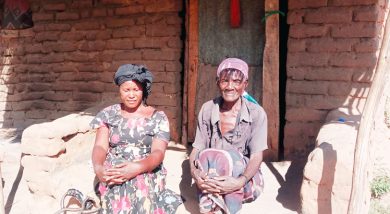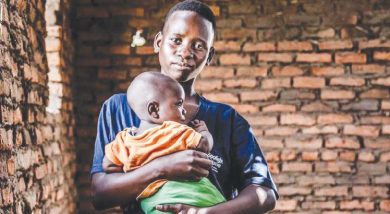Water washes away water
From the late 1960s to mid-1990s, government implemented a viable and cost-effective programme of gravity-flow piped water supplies schemes across the country.
The programme had a wide influence on community water supply because the schemes, varying widely in size, served millions of targeted population across the country.
The gravity-fed piped water schemes are examples of sustainable rural water supply technology with additional benefits to communities as water is brought to their doorsteps.
But for many years these schemes have remained abandoned until a few years ago when some organisations started rehabilitating the schemes to help communities have access to potable water and improve the country’s delivery of water services.

One of these rehabilitated schemes is the East Bank gravity-fed water supply scheme (GFS) in Chikwawa. The scheme was rehabilitated by Water for People, an international water, sanitation and hygiene non-governmental organisation to the tune of K850 million.
Water for People partnered with Chikwawa District Council in 2018 to carry out the major part of rehabilitating and expanding the East Bank GFS to enhance communities’ access to potable water.
The rehabilitation works included working on intakes, laying of water pipelines, construction of water treatment plants, laying of distribution lines and construction of kiosks.
East Bank GFS comprises intakes at Mapelera, Livunzu, Mbadzi and Limphangwi—each designed to supply water to different traditional authorities (T/As).
It has 350 rehabilitated and constructed communal taps and stretches on about 64 kilometres along the Thabwa Turn-off- Fatima-Makhanga Road and supplies water to communities from Kamuzu Bridge on the Shire River to Fatima.
Water for People, with support from Charity Water, constructed 110 communal taps at Limphangwi GFS, 81 at Mbadzi, 89 at Livunzu and 70 were for Mapelera, serving an estimated population of 42 000.
The main supply areas include market centres and villages which are linearly spread on the secondary road S152 situated 10, 16, 25 and 55 kilometres away, respectively.
However, out of the 350 communal taps only 70 are functioning due to Tropical Cyclone Ana that swept and broke the intake pipes laid onto the walls of upland rivers or streams.
Chikwawa district has numerous challenges in as far as access to water is concerned from natural disasters to chemical challenges such as availability of salty water. So, the piped water is one of the solutions to the challenges.
“There has been massive interruption in the supply of potable water because of the cyclone and the only remedy now is to return to the unprotected water sources,” complained Falesi Tembo, a beneficiary of the Mapelera intake.
Tropical Cyclone Ana hit Malawi, Mozambique and Madagascar early this year and left thousands of people struggling with access to safe water as the storm damaged boreholes, sanitation and other facilities.
“Restoration of these facilities in the aftermath of the cyclone will be critical to prevent the outbreak of water-borne diseases such as cholera,” added Tembo.
Sub T/A Chiputula and Chikwawa East legislator Rodrick Khumbanyiwa agreed with Tembo, saying the sweeping away of the water pipes by the cyclone has brought misery to the communities as they now have to walk long distances to draw water from unprotected sources, and are prone to various water-borne diseases.
“Many are facing an increased risk of disease outbreaks. This tropical cyclone Ana destroyed the better part of our water supply facilities. It has impacted vulnerable communities in the East Bank and we plead with government and organisations helping us to swiftly rectify the problems,” lamented Khumbanyiwa.
Water for People country director Ulemu Chiluzi, while saying his organisation strives to ensure provision of quality water in the district, observed that the cyclone erased progress made over the years, forcing the scheme to operate at 40 percent.
Going forward, Chiluzi says Water for People and other partners have mobilised resources to rehabilitate the East Bank GFS by June this year to make the schemes functional and enhance access to potable water to the surrounding communities.
With climate change driving more erratic weather events, including heavy rains and flooding, Water for People is now focusing on climate resilient water, sanitation and hygiene infrastructure.
An example is the Tsamba solar-propelled water scheme where water is pumped from the ground into a tank, where it is gravitated to communal taps.
Eliza Mofolo from group village head (GVH) Tsamba said the area had great difficulty obtaining enough clean water throughout the year, especially in the long dry season, because of the long distances to the water sources but with the scheme, the community was saved from the challenges.
“As we restore the system, we are emphasising to the beneficiaries ownership of the same by encouraging them to be contributing something towards operation and maintenance of the facilities,” says Water for People senior sustainability manager Joseph Magoya.
Minister of Water and Sanitation Abida Mia, who on Tuesday visited some of the areas where Water for People is rehabilitating the water system, said her ministry was rolling out several projects to ensure Malawians in rural areas have access to potable water.
“Water is life and these gravity-fed water schemes ease water challenges we face year in year out as a country. It is vital that people have access to water and sanitation, no matter what so we need to encourage partners that complement government’s efforts to provide potable water to households regardless of location,” she said.
According to the Malawi 2019 Floods Post Disaster Needs Assessment Report, Chikwawa is one of the districts heavily affected by floods’ damage on water, sanitation and hygiene joining Nsanje, Phalombe, Mulanje and Thyolo.





